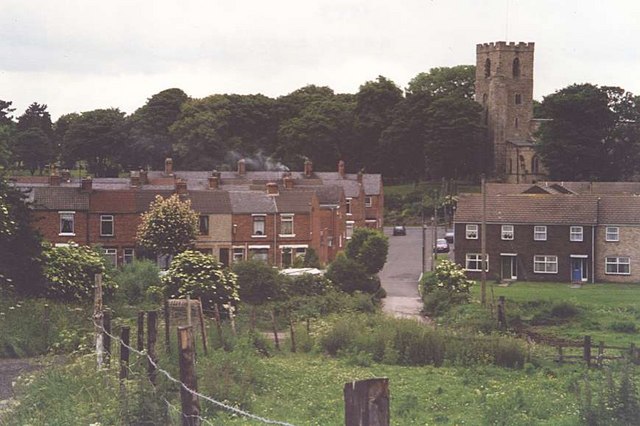Topics > County Durham > Bishop Auckland > Bishop Auckland, 1848
Bishop Auckland, 1848
AUCKLAND, BISHOP, a market-town and chapelry, in the parish of St. Andrew, union of Auckland, N. W. division of Darlington ward, S. division of the county of Durham, 10½ miles (S. W.) from Durham, and 252 (N. by W.) from London; containing 3,776 inhabitants. This place, in common with others in the immediate vicinity, derives its name from the great number of oak-trees that formerly grew in the neighbourhood; and its prefix from a palace, in which the bishops of the diocese, who are lords of the manor, occasionally reside. The town, which is in the centre of the parish, is pleasantly situated on a considerable eminence, near the confluence of the rivers Gaunless and Wear, in a fertile district abounding with coal and limestone, and remarkable for the salubrity of the air. The streets are badly paved; the houses are well built, and the inhabitants are plentifully supplied with water. The palace, originally erected in the reign of Edward I. by Bishop Anthony Beck, and subsequently enlarged, was much injured by Sir Arthur Haslerigg, to whom it was sold by the Parliamentary Commissioners; but after the Restoration it was repaired by Bishop Cosin: it stands in a beautiful park to the north-east of the town, and is a spacious structure, surrounded with plantations and pleasure-grounds watered by the Gaunless. The chapel attached to the palace is a fine edifice in the early and decorated styles, built originally by Bishop Beck, and repaired about 1660 by Bishop Cosin, whose remains are deposited in it. The market is on Thursday; the fairs are in March and October, but on no fixed day. The Bishop-Auckland and Weardale railway, constructed chiefly for the conveyance of coal, and a few passengers, branches off from the Stockton and Darlington railway at Shildon, and passes near the town; it takes a course of eight miles, and terminates by a short branch in the township of Crook. It passes over numerous embankments and bridges in its progress, and through several tunnels, and various roads are carried over it: the embankment at Holdforth alone cost £11,000, and the line was completed at an expense of £96,000, of which £72,000 were raised in original shares, and the remainder by loan. In 1846 an act was passed for a line to the Lancaster and Carlisle railway in Westmorland. The county magistrates hold pettysessions monthly; and courts leet and baron are held annually, at the former of which a bailiff and other officers are appointed. The powers of the county debtcourt of Bishop-Auckland, established in 1847, extend over the registration-district of Auckland.
The chapel, dedicated to St. Anne, is small, and very inadequate to the purposes for which it was designed. There are places of worship for the Society of Friends, Independents, and Wesleyans. The free grammar school was founded by James I., and is endowed with land, a house and garden for the master, and a rent-charge, producing an income of about £60 per annum; the management is vested in twelve governors, who are a body corporate, and have a common seal: the schoolroom, over which is St. Anne's chapel, was rebuilt in 1783. A school for twenty boys was founded by Mr. Walton, in 1772. A central school on Dr. Bell's system, for 200 children, was established in 1810, by Bishop Barrington, who also founded a school of industry for girls, in 1815. Almshouses for two men and two women were founded and endowed by Bishop Cosin, in the reign of Charles II.; the inmates are clothed every third year, and receive an allowance of about £15 per annum each.
Extract from: A Topographical Dictionary of England comprising the several counties, cities, boroughs, corporate and market towns, parishes, and townships..... 7th Edition, by Samuel Lewis, London, 1848.

from https://openlibrary.org/books…
A topographical dictionary of England, Samuel Lewis, 7th Ed., 1848
- A topographical dictionary of England
comprising the several counties, cities, boroughs, corporate and market towns, parishes, and townships, and the islands of Guernsey, Jersey, and Man, with historical and statistical …
Added by
Simon Cotterill


from https://openlibrary.org/books…
A topographical dictionary of England, Samuel Lewis, 7th Ed., 1848
- A topographical dictionary of England
comprising the several counties, cities, boroughs, corporate and market towns, parishes, and townships, and the islands of Guernsey, Jersey, and Man, with historical and statistical …
Added by
Simon Cotterill






